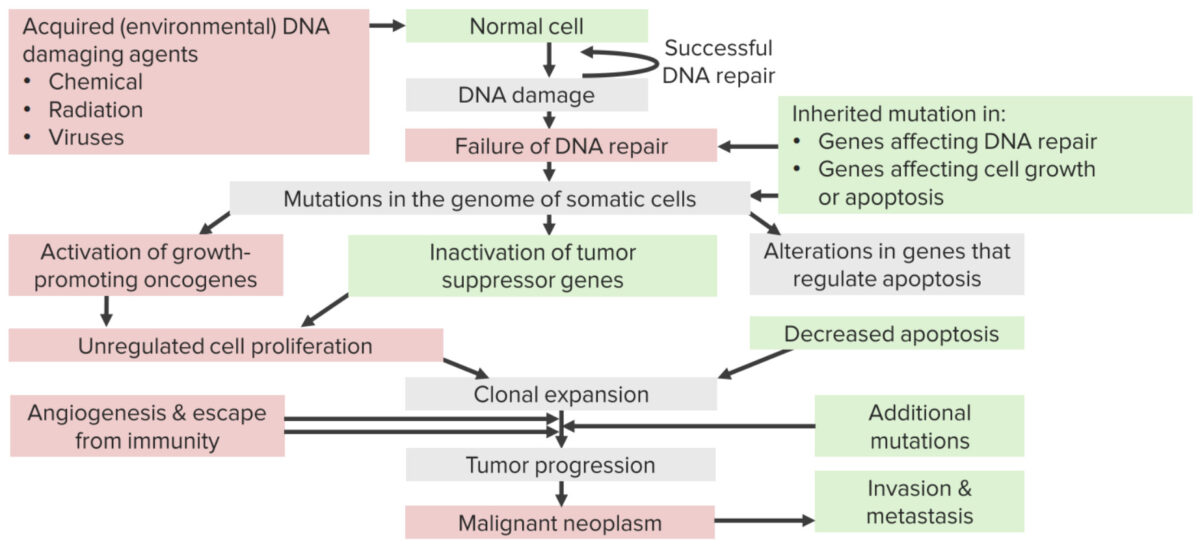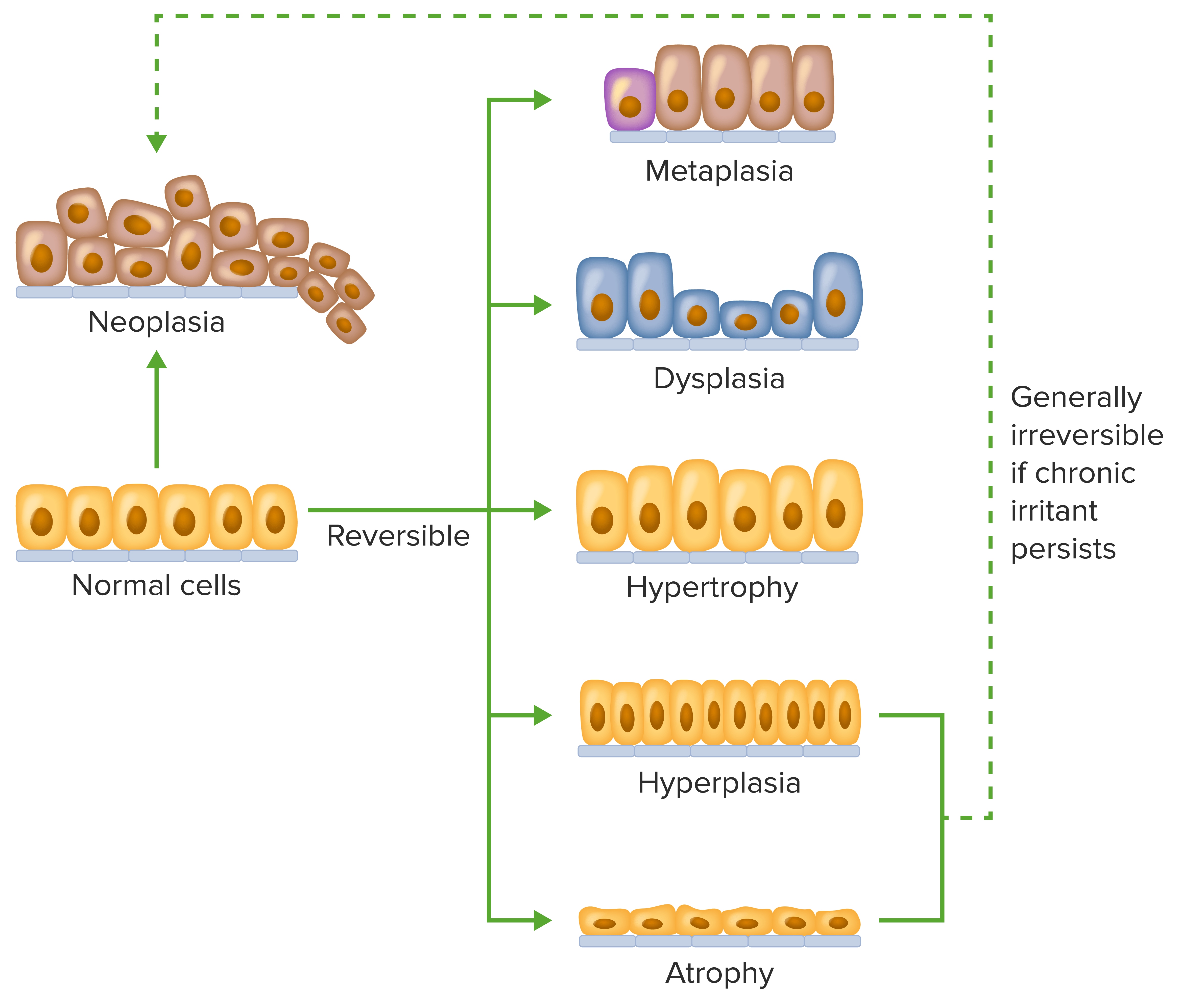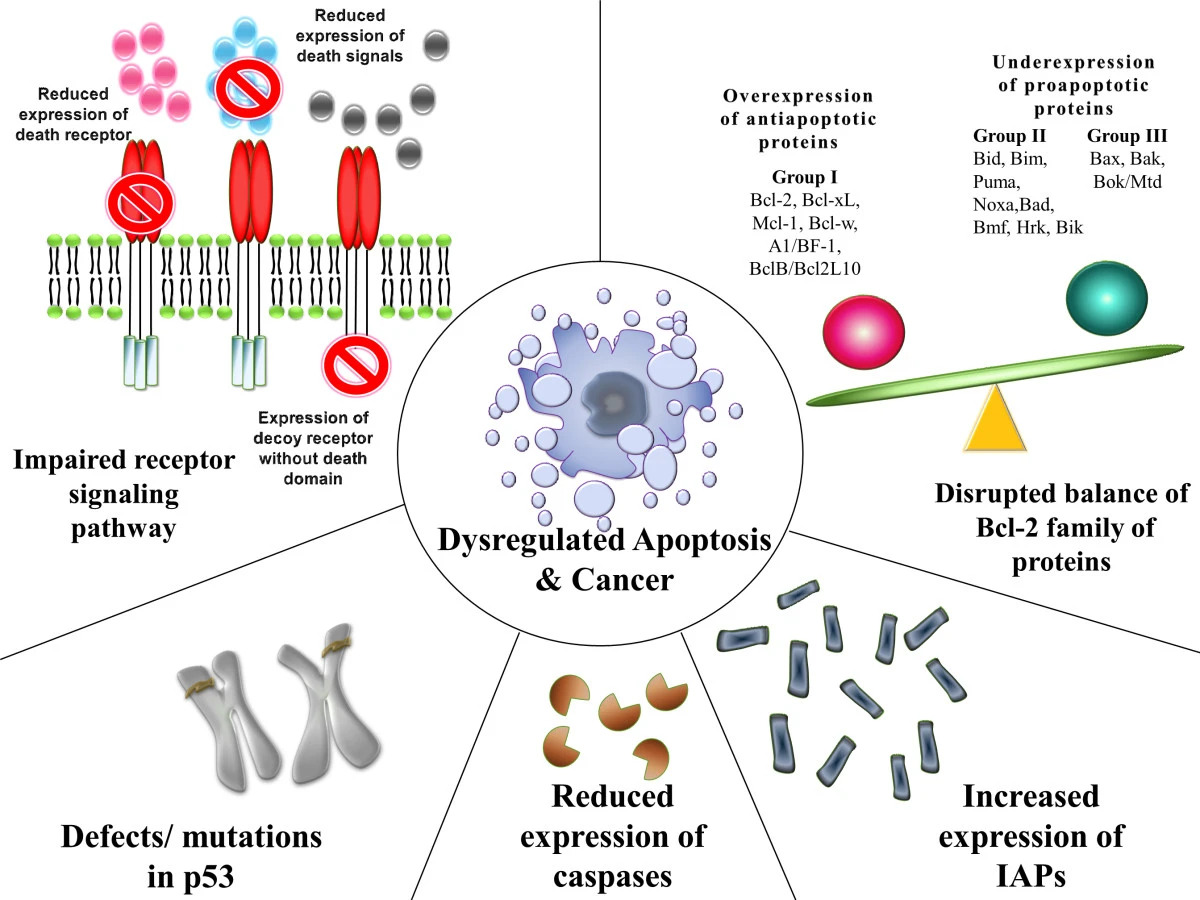Carcinogenesis is the development of cancer by transforming healthy cells into cancer cells. This complex process occurs because of mutations in DNA DNA A deoxyribonucleotide polymer that is the primary genetic material of all cells. Eukaryotic and prokaryotic organisms normally contain DNA in a double-stranded state, yet several important biological processes transiently involve single-stranded regions. DNA, which consists of a polysugar-phosphate backbone possessing projections of purines (adenine and guanine) and pyrimidines (thymine and cytosine), forms a double helix that is held together by hydrogen bonds between these purines and pyrimidines (adenine to thymine and guanine to cytosine). DNA Types and Structure that prevent the normal process of cell division Cell Division A type of cell nucleus division by means of which the two daughter nuclei normally receive identical complements of the number of chromosomes of the somatic cells of the species. Cell Cycle. Normal cells have programmed cell death Cell death Injurious stimuli trigger the process of cellular adaptation, whereby cells respond to withstand the harmful changes in their environment. Overwhelmed adaptive mechanisms lead to cell injury. Mild stimuli produce reversible injury. If the stimulus is severe or persistent, injury becomes irreversible. Apoptosis is programmed cell death, a mechanism with both physiologic and pathologic effects. Cell Injury and Death, but cancer cells proliferate without regulation. The genetic changes that cause cancer may occur in reproductive cells of the ova and sperm and propagate to progeny. Somatic changes are acquired during an individual’s lifetime because of exposure to carcinogenic chemicals, tobacco, radiation Radiation Emission or propagation of acoustic waves (sound), electromagnetic energy waves (such as light; radio waves; gamma rays; or x-rays), or a stream of subatomic particles (such as electrons; neutrons; protons; or alpha particles). Osteosarcoma, and other factors. Mutations in oncogenes that promote cell growth and tumor Tumor Inflammation suppressor genes Genes A category of nucleic acid sequences that function as units of heredity and which code for the basic instructions for the development, reproduction, and maintenance of organisms. DNA Types and Structure that reduce cell growth are important mechanisms in the dysregulation of cell division Cell Division A type of cell nucleus division by means of which the two daughter nuclei normally receive identical complements of the number of chromosomes of the somatic cells of the species. Cell Cycle and lead to cancer. Cancers are classified by their cell type and their location.
Last updated: Dec 15, 2025

Mechanisms of carcinogenesis due to carcinogens causing DNA damage
Image by Lecturio. License: CC BY-NC-SA 4.0
Cellular changes:
Atrophy: decreased tissue mass due to decreased size and/or number of cells (reversible) Hyperplasia: increase in cell number (reversible)
Hypertrophy: increase in cell size (reversible)
Dysplasia: change in cell structure (reversible)
Metaplasia: change in cell type (reversible)
Neoplasia: change in cell type and structure (usually irreversible)

Pathophysiology of cancer
Image: “Mechanisms contributing to evasion of apoptosis and carcinogenesis” by Wong, R.S. License: CC BY 2.0There are 4 classes of normal regulatory genes Genes A category of nucleic acid sequences that function as units of heredity and which code for the basic instructions for the development, reproduction, and maintenance of organisms. DNA Types and Structure that are often damaged.